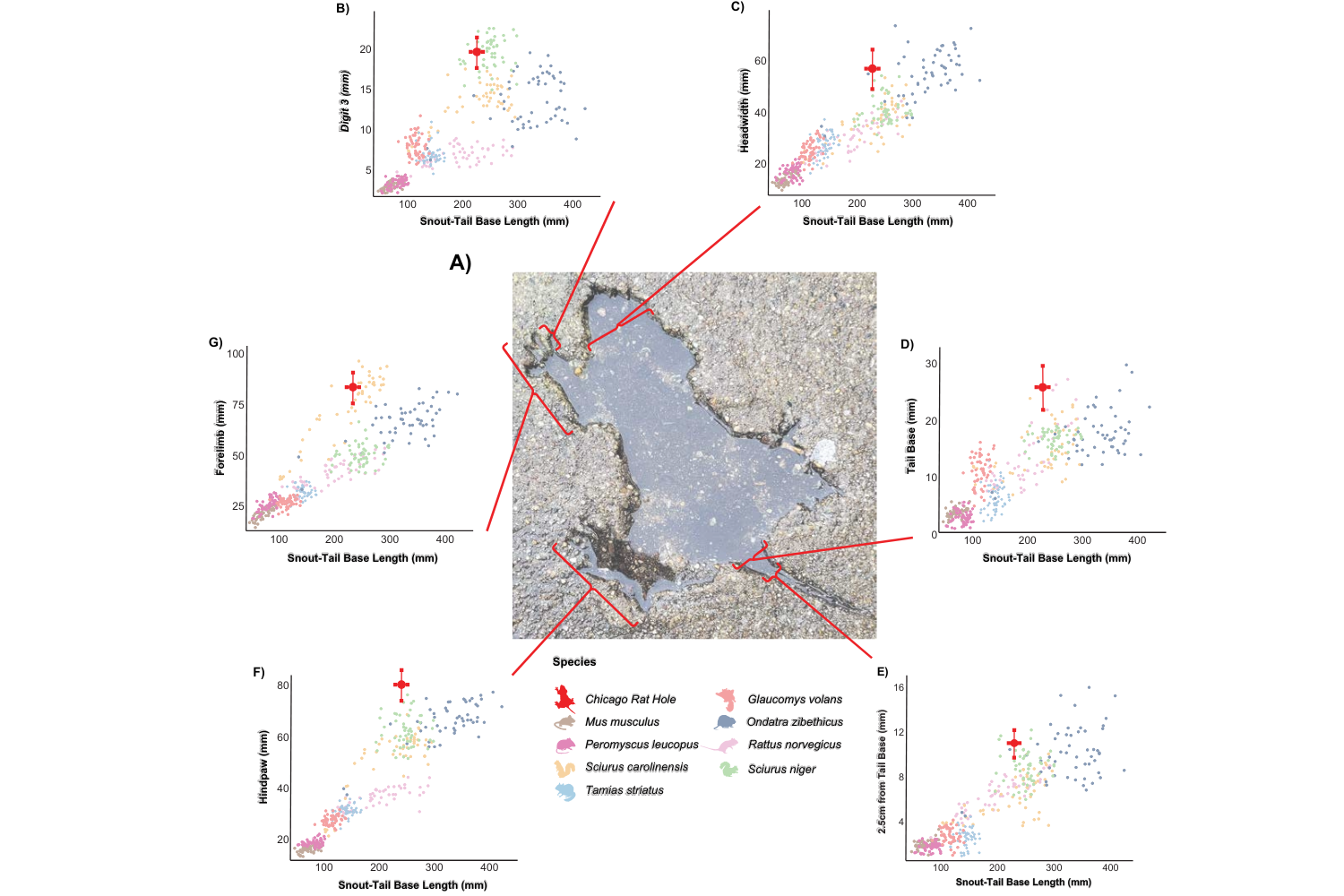A year after it sparked worldwide attention, scientists have settled one of Chicago’s strangest viral mysteries—revealing that the so-called “Chicago rat hole” was not actually made by a rat.
Researchers led from the University of Tennessee and the New York Institute of Technology examined the famous sidewalk impression—thought to be left by a rat splatting into wet concrete—and found that its shape and proportions actually match a squirrel.
The small imprint in a Roscoe Village sidewalk became an internet sensation in early 2024 after comedian Winslow Dumaine posted about it online.
"A perfect rat splat mark," Dumaine previously told Newsweek. "It was like something straight out of a Looney Tunes cartoon."
Visitors quickly flocked to the area, leaving coins, flowers and figurines— and even holding mock vigils at the site.
The patch of pavement became a quirky Chicago landmark nicknamed “Splatatouille” before city workers removed the slab and moved it to the City Hall later that year.

A Scientific Test
Despite its online fame, no one ever formally analysed the imprint to confirm what species left it in the sidewalk—until now. The researchers published their findings in a study in the journal Biology Letters.
Looking at photographs of the snout-to-tail length, paw size and head width, they compared measurements with museum specimens of eight local rodent species, from brown rats to mice and chipmunks to squirrels.
Their analysis found a 98.67 percent likelihood that the shape belonged to the genus Sciurus—the group that includes eastern gray squirrels and fox squirrels.
Of those, the eastern gray squirrel is most common in Chicago, making it the likeliest culprit for the imprint.

How the Squirrel Left the Mark
Seth Magle, director of the Lincoln Park Zoo’s Urban Wildlife Institute, noted that concrete is usually poured during the day, when squirrels are active, while rats are nocturnal. He also pointed out that there were no footprints leading toward or away from the hole, suggesting the animal likely fell from above rather than walking into it.
The study agreed that the culprit that made the mark was likely dropped into the wet cement, leaving the near perfect body impression.
“It is far more likely that a squirrel, despite their agility, misjudged a leap or slipped from a branch and fell, leaving the impression,” the study’s authors wrote in the paper.
The authors suggest renaming the mark the “Windy City Sidewalk Squirrel,” and said that the study was the perfect example of how real-world situations could become scientific research.
In their paper, the researchers concluded: “At its core, science simply requires curiosity and a commitment to understanding the natural world around us.”
Do you have a tip on a science story that Newsweek should be covering? Do you have a question about rodents? Let us know via science@newsweek.com.
Reference
Granatosky, M. C., Guilhon, G. N., Chernik, N. D., Kantonis, S. J., Lee, C. J., & Dickinson, E. (2025). Rodent indent not self-evident: A case of mistaken identity of the “Chicago Rat Hole”. Biology Letters, 21(10). https://doi.org/10.1098/rsbl.2025.0343






















